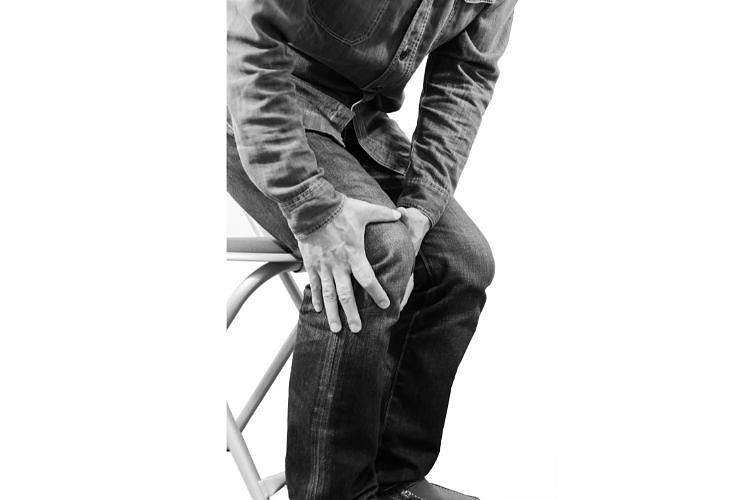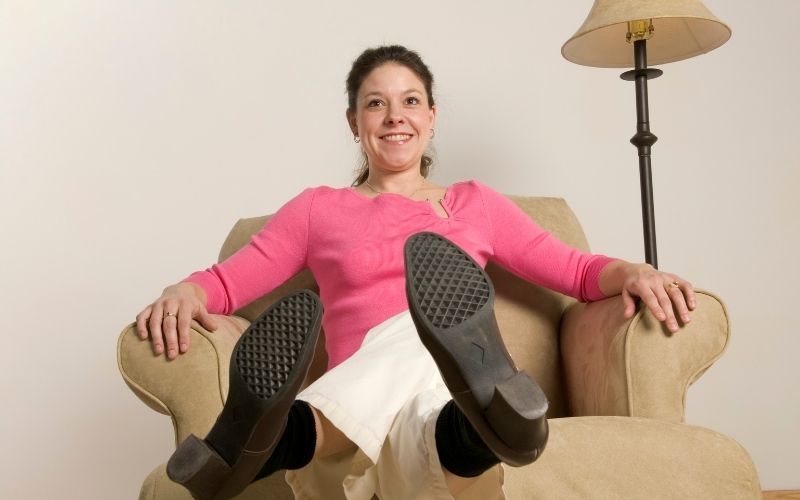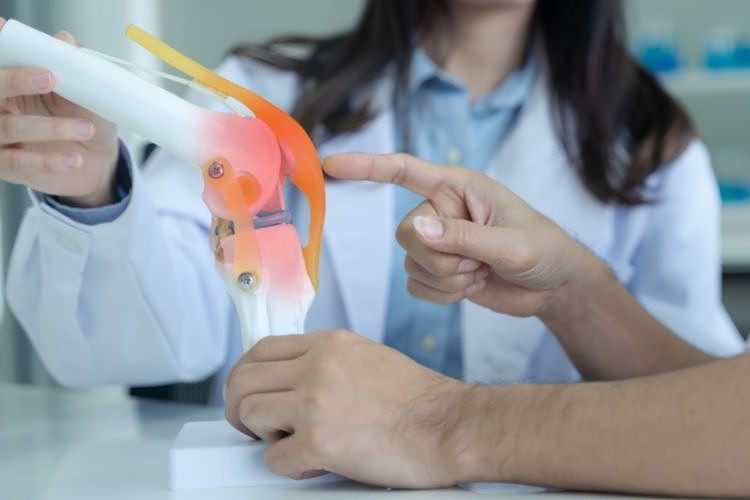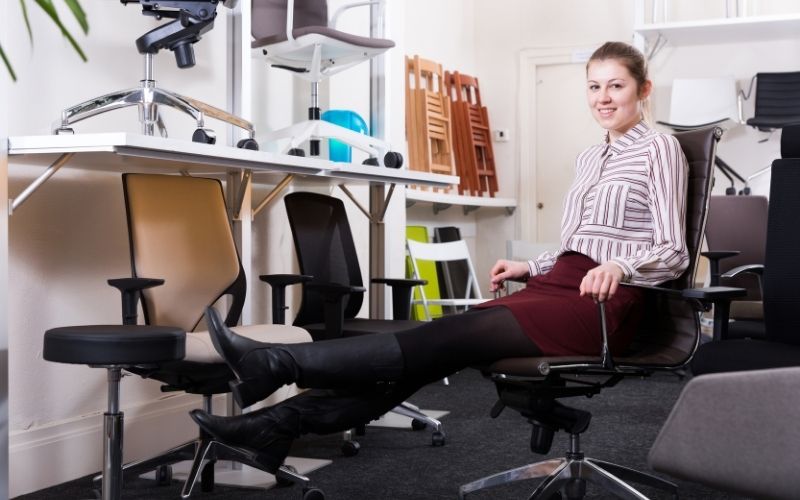We often associate knee pain with people who live active lifestyles, such as cyclists and runners. So if your typical day is equivalent to sedentary activities such as working all day at a desk, you may dismiss knee pain as a sign of aging or perhaps a result of an existing underlying condition, including Arthritis.
However, what most people don’t know is that knee pain also results from having inactive lifestyles. Sitting for prolonged periods and regularly, especially when you stay in an uncomfortable position, does not only affect your lower back and neck, but it can also be harmful to your knees.
If you want to learn about how an office chair contributes to knee pain, as well as how to reduce knee pain caused by sitting too much, keep reading.
Your office chair can cause knee pain, especially when it lacks the ergonomic features that help you maintain a good sitting posture. If it does not have a lever that allows height adjustment, you may be putting too much pressure on your knees by bending it deeply from sitting on a too low or too high chair.
Table of Contents
Can my office chair cause knee pain?

Knee pain can be a result of any of the following:
- Underlying medical condition
- Prolonged sitting
- Poor sitting posture
- Furniture with poor ergonomic design
Yes, an office chair can cause knee pain. Sitting for more than eight hours a day can be detrimental to your health, more so if you are using the wrong office chair.
Why does an office chair cause knee pain?
The design of furniture can either alleviate or worsen discomfort caused by prolonged sitting. And often, the primary reason why an office chair causes knee pain is its lack of adjustability.

Sitting on a too-low chair can spark pain as you force your knees above your hips. Bending your knees for too long can irritate the cartilage in your kneecaps or lead to a torn ligament or meniscus.
Sitting on a too-high chair isn’t good either as it strains the area behind the knees, also called the popliteal fold. It also puts too much pressure on your back.
Make sure you use an office chair with an adjustable seat height. It will help you maintain a more neutral back alignment so that you can sit properly and avoid knee pain.
How do I stop my knees from hurting when I sit?
Knee pain is common when you sit for long periods, but you can prevent or minimize it.
Below are various ways you can stop or reduce knee pain when sitting.
- Knee pain is often caused by inactivity from sitting for too long. Doing some physical activity is the best way to relieve or correct it.

Take quick breaks from your work and get up every 30 to 60 minutes. Stand up and stretch or walk around for a bit.
You can also do some quick exercises while sitting.
Remove pressure from your knee with some leg raises. Lift one leg without raising your thigh so that it is parallel to the floor, hold the stretch for at least five seconds before lowering down, and repeat with the other leg.
Straighten your back, and pull your knee towards your chest. Hold it for a few seconds, lower it down, and repeat with the other leg.
- Vary your seating positions.
If taking quick breaks or standing up is not possible, switch up your sitting positions every half hour. Shift around in your seat and gently flex your knees by extending your legs.

Simple movements like this improve blood flow and activate the leg muscles supporting the knees. The way you sit can significantly affect the way your body feels.
- Maintain a proper sitting posture.
Keeping your knees comfortably bent is the best way to avoid pain in the kneecaps. To do this, adjust your seat height so as not to sit too high or too low.
Also, keep a distance about the width of two or three fingers between the back of your knees and the cushion. Make sure you are not sitting too far back on your chair.
- Avoid crossing your legs while sitting.
Sitting with your legs crossed or bent beneath you puts pressure on your kneecaps. It stretches the ligaments and muscles that surround your knee and can result in pain and swelling.
It also disrupts your blood flow, causing numbness.
If you can’t avoid sitting with crossed legs, try limiting it to a maximum of 20 minutes at a time, then switch your sitting position.
- Make adjustments in your workspace.
Adjusting your desk and sitting at an optimal distance from your computer screen can also help relieve knee pain by improving your sitting position. If it helps, consider investing in a sit-stand desk.
- Upgrade your office chair.
If all else fails, consider upgrading to an ergonomic office chair. One of the most common reasons your knees ache when sitting is because your chair lacks enough support.
Switching to an ergonomic office chair that helps you correct your sitting posture can remedy knee pain.
Look for an office chair with an adjustable seat height, firm cushions, and lumbar support features. Also, consider one with a waterfall seat edge design.
A waterfall seat design is a type of seating that slopes downward, takes pressure from the thighs’ back, and relieves tension behind the knees. It has a rounded front that molds a person and enables equal weight distribution across the seat pan.
- If your knee pain is due to an underlying health condition, seek professional help. Consult your doctor.

Depending on your condition, you may need anti-inflammatories, cortisone injections, physical therapy, or in severe cases, surgery. If there is swelling, applying ice may provide temporary relief.
How do I adjust my office chair to avoid knee pain?
Sitting all day can have severe impacts not only on your back, neck, and legs but also on your knees. And often, an incorrectly positioned office chair can intensify knee pain.
Fixing your office chair may not be a permanent solution, but it can help reduce discomfort and prevent knee pain from developing into a chronic condition.

Stand in front of your office chair and adjust the height of your seat pan so that it is directly below your kneecaps. Then, sit with your back firmly against the backrest, and adjust the gas cylinder to an ideal height.
Your thighs should be parallel to the floor and your feet flat on the ground. When seated, your knees should be at roughly the same level as your hips or slightly higher, bent at an angle of approximately 90 degrees.
If your desk is high and your feet do not touch the floor, use a footrest or footstool to aid proper alignment. If your office chair’s cylinder cannot accommodate an ideal seat height for you, you should consider replacing it if buying a new chair is not yet an option.
Most office chairs have a seat height range of about 16 to 21 inches off the floor. This range works for most people, but if you are too short or too tall, you may need to look for one that can specifically cater to your needs.
Why do you need an office chair with adjustable height?

The simplest yet most essential feature of an office chair is its adjustable height. It may not seem like a big deal, but it helps you focus on your work while supporting you as you sit, reducing the risks of neck, back, leg, and even knee pains.
There is rarely a one-size-fits-all for office chairs, and it is impossible to find the perfect seat for everybody, but one with an adjustable seat height comes close.
Imagine sitting on a chair that keeps your feet dangling. Not only is it uncomfortable, but it also affects your work efficiency as you may feel uneasy not being able to reach the floor.
Often, people adapt to their work environments instead of improving the ergonomics in their workspaces. By simply using a chair with adjustable seat height, you can release pressure off your body and relax as you sit.
Conclusion

If your work requires you to sit for an average of eight hours while working, you will most likely experience knee pain from inactivity. Our bodies are built for active lifestyles, so when we stay fixed for extended periods, the muscles and tendons can go stiff and become painful.
Investing in a good quality ergonomic chair can drastically reduce knee pain and improve your overall health. It can correct your posture, take away tension from various parts of your body, and even increase productivity.
However, being active and incorporating movements in your daily life is just as good a solution. Regularly performing stretches and simple exercises reduce the risks of pain and swelling brought about by muscle inaction.

My name is Vance, and I am the owner of To Ergonomics. Our mission is to improve your workflow by helping you create a supportive and welcoming environment. We hope that you’ll find what you’re looking for while you’re here.

